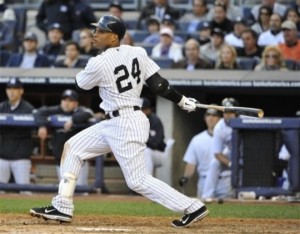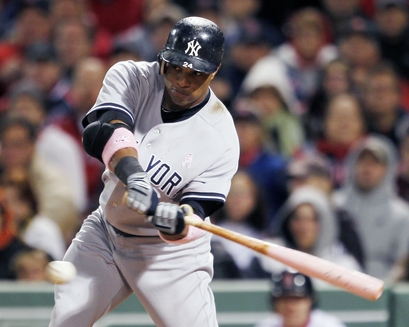 Robinson Cano is not the answer to the New York Mets problems.
Robinson Cano is not the answer to the New York Mets problems.
A 31-year old free agent, Cano’s sticker price is somewhere around 10 years/$300 million. In fan speak that’s somewhere in the nosebleed section.
Which Major League Baseball organization is ready to invest in a player who will earn $30 million per season (assuming he earns $30 million per year) at age 38, 39, 40 and 41. The New York Yankees won’t. The Los Angeles Dodgers learned their lesson on trying to buy a championship; they’re not interested in Cano at that price. The Mets? Comical.
The dinner meeting between Jay Z, and Mets general manager Sandy Alderson is nothing more than hype. In fact, baseball insiders suggest the Mets are pawns in an attempt to get the crosstown Yankees to respond. No such luck.
The Mets are in no position to make an offer to Cano and here’s why: According to COT’s, the 2013 New York Mets payroll was $93,684,590. As reported, Cano is asking for $300 million over 10 years, or the equivalent of the Mets entire 25-man payroll over three years.
This is the “dream” that New York Post columnist is Kevin Kernan suggests fans and the organization buy into, both literally and figuratively? If so, recent history suggests such investments can quickly turn into a nightmare.
The Mets have to get into major buy mode … Dream along with me for a little bit more. Could you imagine if the Mets had Cano and Wright in the same lineup and how that would turn this town upside down … The Mets need to find a way to wipe away the face of failure that has been with them every day for years.
Two years ago, at age 31, Albert Pujols signed a 10-year, $240 million deal with the Los Angeles Angels of Anaheim. The deal was loaded with incentives above and beyond the $240 million guaranteed deal.
In 2001, Alex Rodriguez signed a 10-year, $252 million contract with the Texas Rangers. During his three years in Texas the team won 73, 72, and 71 games, finishing in fourth place every season. Rodriguez produced but the Rangers didn’t.
When the contract was signed, there was a lot of concern among not just Major League Baseball, but all sports for the dollars that were involved. In terms of what was going on in the economy and everything else five or six years ago, it really changed the economics across all of sport in a pretty dramatic way. What’s the real value of a player? — Harvey Schiller
The organization realized one player, regardless of his output, does not make a winner. Rodriguez — and his massive contract — were traded to New York.
I am certain the Mets human resources department is familiar with the residual effects of overpaying. Remember Bobby Bonilla? You should. He’s on the Mets payroll until 2035. Mind you, he hasn’t played in a major league game in more than a decade.
How about Prince Fielder? He signed a nine-year, $214 million deal with the Detroit Tigers prior to the 2012 season. Two years, zero rings and a lingering feeling in Detroit that this was a bad deal. As Jeff Passan at Yahoo! Sports noted in the aftermath of another disappointing post-season:
$46 million he made this year and last, and for the $168 million he will earn over the next seven seasons, and almost always the amount of money a player receives and the level of vitriol toward him for October letdowns are correlated … He is Prince Fielder, he signed the fifth-largest contract in baseball history and he will keep catching hell if he doesn’t start hitting.
Kernan added:
Remember the excitement when Mike Piazza was traded to the Mets from the Marlins. Imagine if the Mets could somehow pull off a deal to acquire someone as talented as Carlos Gonzalez or Giancarlo Stanton. The Mets would be a big-market team again.
Has Stanton made the Marlins a contender? No. In 2012 he was surrounded by Hanley Ramirez, Logan Morrison, Jose Reyes and Carlos Lee. The Marlins were loaded with great starting pitching: Josh Johnson, Mark Buehrle, Ricky Nolasco, Carlos Zambrano and Anibal Sanchez. The Marlins finished in last place in the National League East — behind the beleaguered Mets.
Don’t misunderstand. The Mets would be a better team with Gonzalez, Stanton or Cano, but at what price? Let’s face it, it’s highly unlikely the Mets will be playing for a playoff spot in 2014. Will one high-profile player put them over the top? No. The Mets need a handful of young, major league ready talent, not an aging veteran or an overpriced big ticket free agent. Improve the overall team, get competitive — quickly — then add the final pieces, either by free agent or trade.
Robinson Cano would not make the Mets a “big market” team again. The Mets are a big-market team, performing at a minor league level and operating on a small market budget.















